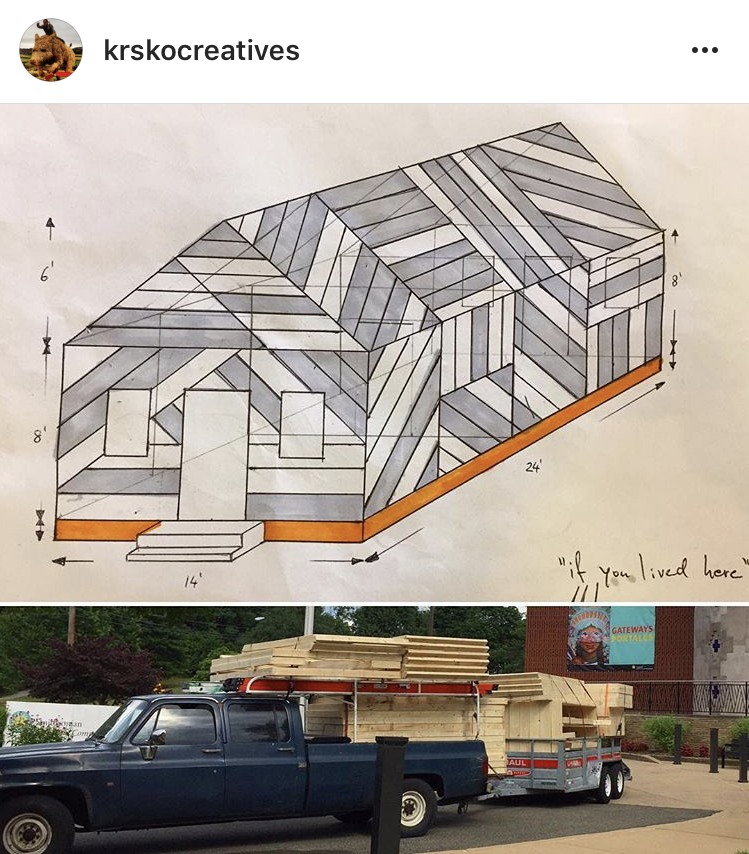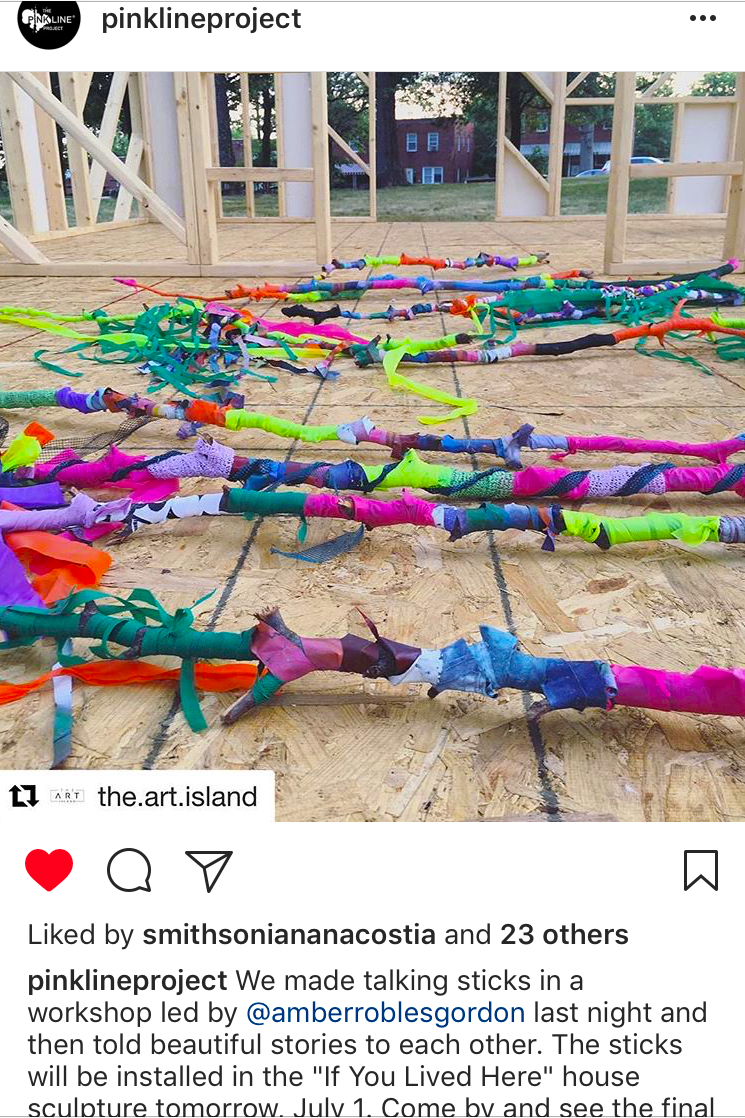Talking Sticks: If You Lived Here DC
Installation, Public Artwork, 2017
As part of the #ifyoulivedheredc project produced by The Pink Line Project and hosted by Anacostia Smithsonian Musuem, I led a workshop in which participants learned about and were prompted to create Talking Sticks. The talking sticks were made to represent an issue or memory concerning their home, a place in Anacostia and or a social issue. At the end of the workshop participants were invited to share a specific memory of home, a experience in Anacosita, concerns regarding a social issue or simply thoughts regarding participating in the workshop. Finally, the talking sticks were used to create the featured art installation.
Truly, a moving experience folks/participants of all ages literally poured themselves, their energy into these sticks.
#ifyoulivedheredc
“Home is not just a structure. Home is family, community, stories, food, and culture. If YOU Lived Here is a hands-on public art installation that encourages us to reflect on how we live − in the house, the home, and the broader community across 150 years of shared history.”
Shedding light on history
On June 27, 1867, Reverend Richard Hall, pastor of Union Bethel Church (known today as Metropolitan A.M.E.), purchased lot number 5, Section 2 on Stanton Road, SE, the first one-acre lot sold in the new Freedmen’s community, but later renamed Hillsdale. For a down payment of $15.00 a purchaser was provided a wagon-load of lumber and instructions for building a “simple but good quality house.” Reverend Hall was a pioneer − the 375-acre neighborhood, deeded to the Freedmen’s Bureau, gave newly freed African Americans the opportunity to own land and build their own homes. This self-sufficient community grew and thrived, eventually having its own school, recreation areas, post office, churches, cemeteries, and markets.
Archaeological investigations conducted over the past forty years in Southeast Washington, D.C., gives us a glimpse into the everyday lives of the first settlers and their descendants. The tangible, material evidence that have been unearthed shows how the residents lived, worshipped, built homes, and maintained their community. One trove of artifacts found in a house attic prior to demolition includes fragile historic objects that provide insight into the day-to-day life of the community that would normally be lost to both history and archaeology. For example, medical supplies, a repaired shoe, a summer hat, and a sled help us understand seasonal and mundane aspects of life in this historic community.
An homage to a house
If YOU Lived Here seeks to commemorate the founding of this community, and also to reflect on how we live today. Visitors will draw parallels between the past and the present through a series of interactive, tactile, and creative activities.
As we recognize the anniversary of the first one-acre lot sold in the new community, Washingtonians and residents will be able to relive history through an immersive, hands on experience that will connect them with their past and present. From June 16th through June 30th, 2017, an artistic representation of a full-scale replica of one of the 1867 houses will be constructed adjacent to the Smithsonian Anacostia Community Museum. This unique setting will provide the backdrop for a series of activities including community gatherings, historical presentations, and dialogues. The project will provide an opportunity for individuals to reflect on their own basic needs now, and compare them with the past.
Community members will work with acclaimed artist and Anacostia resident Amber Robles-Gordon to complete the house with a series of art fabrications. Historic and contemporary objects and artwork will be located in, on, and around the dwelling, stirring residents to reflect on the intersection of history, community, and identity, to amplify the power of collective memory. Replicas of archaeological artifacts and attic objects can be touched and moved. Visitors will use the provided objects and be invited to bring copies of their own photos, family heirlooms, and other items of interest, to tell their own stories about house and home.
Visitors will interact with members of the DC Historic Preservation Office and the Smithsonian Anacostia Community Museum to learn about the history and archaeological findings of the families who built and lived in these houses and called this strong and vibrant community “home.”
https://www.ifyoulivedheredc.com








